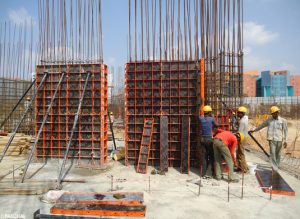Forensic science has always been about piecing together fragments of evidence to form a coherent narrative. Traditionally, this narrative was constructed using physical evidence, witness testimonies, and expert analysis. However, with the advent of modern technology, the methods employed in forensic science have evolved dramatically. One such technological advancement that has had a profound impact on forensic science is 3D animation. By leveraging 3D animation services, forensic experts can create detailed, accurate, and visually compelling reconstructions of crime scenes, events, and evidence. This blog will delve into the various ways in which 3D animation is revolutionizing forensic science, exploring its applications, benefits, and the future potential of this innovative tool.
Applications of 3D Animation in Forensic Science
Crime Scene Reconstruction
One of the most significant applications of 3D animation in forensic science is crime scene reconstruction. Traditional methods of documenting crime scenes involve photographs, sketches, and written reports. While these methods are essential, they have limitations in capturing the full spatial context and intricacies of a scene. 3D animation, on the other hand, allows forensic experts to create highly detailed and accurate reconstructions of crime scenes. These reconstructions can include the precise placement of objects, blood spatter patterns, and even lighting conditions at the time of the crime.
By using 3D animation services, forensic experts can recreate the crime scene in a virtual environment, providing investigators, juries, and legal professionals with a clear and immersive visualization of the events. This level of detail can be crucial in understanding the sequence of events, identifying potential suspects, and corroborating witness testimonies.
Accident Reconstruction
Accident reconstruction is another area where 3D animation has proven to be invaluable. Whether it’s a car crash, an industrial accident, or a slip and fall incident, accurately reconstructing the events leading up to and during the accident is essential for determining liability and understanding the causes. 3D animation can recreate these events with a high degree of accuracy, incorporating factors such as vehicle speeds, trajectories, impact points, and environmental conditions.
Forensic experts can use 3D animation to simulate different scenarios, testing various hypotheses and visually demonstrating the most likely sequence of events. This can be particularly useful in court, where clear and compelling visual evidence can help juries understand complex technical information and make informed decisions.
Blood Spatter Analysis
Blood spatter analysis is a critical component of many forensic investigations, providing insights into the nature and dynamics of violent crimes. Traditional blood spatter analysis involves examining the size, shape, and distribution of bloodstains to determine factors such as the type of weapon used, the direction of force, and the position of the victim and assailant. However, interpreting blood spatter patterns can be challenging and prone to subjective interpretation.
3D animation offers a powerful tool for blood spatter analysis, allowing forensic experts to create accurate and dynamic visualizations of blood spatter patterns. By simulating the physics of blood droplets and their interactions with surfaces, 3D animation can provide a more objective and precise analysis. These visualizations can help investigators understand the mechanics of the crime, test different scenarios, and present compelling evidence in court.
Bullet Trajectory Analysis
Determining the trajectory of bullets is another critical aspect of forensic investigations, particularly in cases involving firearms. Understanding the path of a bullet can provide valuable information about the shooter’s position, the number of shots fired, and the sequence of events. Traditional methods of bullet trajectory analysis involve stringing techniques and laser alignment, which can be time-consuming and prone to inaccuracies.
3D animation can streamline and enhance bullet trajectory analysis by creating precise and detailed visualizations of bullet paths. By incorporating factors such as bullet speed, angles, and environmental conditions, 3D animation can provide a clear and accurate representation of the trajectory. These visualizations can be used to corroborate witness testimonies, test different hypotheses, and present compelling evidence in court.
Facial Reconstruction
Facial reconstruction is a specialized application of 3D animation used in forensic anthropology and archaeology. This technique involves reconstructing the facial features of unidentified individuals based on their skeletal remains. Traditional methods of facial reconstruction involve clay modeling and drawing, which can be subjective and time-consuming.
3D animation offers a more accurate and efficient approach to facial reconstruction. By using advanced software and techniques, forensic experts can create detailed and realistic 3D models of faces based on skeletal remains. These models can be used to identify missing persons, solve cold cases, and provide valuable information for historical and archaeological research.
Virtual Autopsy
Autopsies are a critical component of forensic investigations, providing valuable information about the cause and manner of death. Traditional autopsies involve invasive procedures that can be time-consuming and distressing for the families of the deceased. Virtual autopsy, also known as post-mortem imaging, is a non-invasive alternative that uses advanced imaging techniques such as CT scans and MRI to examine the body.
3D animation can enhance virtual autopsy by creating detailed and dynamic visualizations of the internal structures of the body. These visualizations can provide a clear and accurate representation of injuries, diseases, and other factors that may have contributed to the death. Virtual autopsies can be particularly useful in cases involving complex injuries, where traditional methods may not provide sufficient information.
Benefits of 3D Animation in Forensic Science
Enhanced Visualization
One of the most significant benefits of 3D animation in forensic science is enhanced visualization. Traditional methods of documenting and presenting forensic evidence can be limited in their ability to convey complex spatial and temporal information. 3D animation provides a powerful tool for creating detailed, accurate, and visually compelling reconstructions of events, scenes, and evidence.
These visualizations can help investigators, legal professionals, and juries understand complex technical information, test different hypotheses, and make informed decisions. By providing a clear and immersive representation of the evidence, 3D animation can enhance the overall effectiveness of forensic investigations and legal proceedings.
Increased Accuracy
Accuracy is a critical factor in forensic science, where even small errors can have significant consequences. Traditional methods of documenting and analyzing forensic evidence can be prone to inaccuracies and subjective interpretation. 3D animation offers a more objective and precise approach, providing detailed and accurate visualizations of events, scenes, and evidence.
By using advanced software and techniques, forensic experts can create highly detailed and accurate reconstructions of crime scenes, accidents, and other events. These reconstructions can incorporate factors such as lighting conditions, environmental conditions, and the physical properties of objects and materials. This level of accuracy can be crucial in understanding the sequence of events, identifying potential suspects, and presenting compelling evidence in court.
Improved Communication
Effective communication is essential in forensic science, where complex technical information must be conveyed to a wide range of audiences, including investigators, legal professionals, and juries. Traditional methods of presenting forensic evidence can be limited in their ability to convey complex spatial and temporal information.
3D animation provides a powerful tool for improving communication in forensic science. By creating detailed and visually compelling reconstructions of events, scenes, and evidence, 3D animation can help convey complex technical information in a clear and understandable manner. These visualizations can be particularly useful in court, where clear and compelling visual evidence can help juries understand complex technical information and make informed decisions.
Versatility
3D animation is a versatile tool that can be applied to a wide range of forensic investigations, from crime scene reconstruction to facial reconstruction and virtual autopsy. By leveraging 3D animation services, forensic experts can create detailed and accurate visualizations of events, scenes, and evidence, regardless of the nature of the investigation.
This versatility makes 3D animation an invaluable tool in forensic science, providing a powerful and flexible approach to documenting, analyzing, and presenting forensic evidence. Whether it’s a complex crime scene, a fatal accident, or a cold case involving skeletal remains, 3D animation can provide the detailed and accurate visualizations needed to support forensic investigations and legal proceedings.
The Future of 3D Animation in Forensic Science
The future of 3D animation in forensic science is bright, with continued advancements in technology and techniques promising to further enhance its capabilities and applications. Some of the key trends and developments that are likely to shape the future of 3D animation in forensic science include advancements in real-time rendering, virtual reality (VR) simulations for crime scene reconstructions, improved facial recognition software integration, and the utilization of collage animation techniques to create more detailed and accurate visual representations of events. These innovations not only aid in crime scene analysis and courtroom presentations but also contribute to the overall effectiveness and precision of forensic investigations.
Advances in Technology
Advances in technology, including improvements in software, hardware, and imaging techniques, are likely to further enhance the capabilities of 3D animation in forensic science. These advancements will enable forensic experts to create even more detailed, accurate, and realistic visualizations of events, scenes, and evidence.
For example, advances in imaging techniques such as photogrammetry and laser scanning can provide more detailed and accurate data for creating 3D reconstructions of crime scenes and objects. Improvements in software and algorithms can enhance the accuracy and realism of 3D animations, making them even more effective tools for forensic investigations and legal proceedings.
Integration with Other Technologies
The integration of 3D animation with other technologies, such as virtual reality (VR) and augmented reality (AR), is likely to further enhance its applications and capabilities in forensic science. VR and AR can provide immersive and interactive experiences, allowing investigators, legal professionals, and juries to explore and interact with 3D reconstructions of events, scenes, and evidence.
For example, VR can be used to create immersive crime scene walkthroughs, allowing investigators to explore the scene in a virtual environment and examine details from different perspectives. AR can be used to overlay 3D animations onto physical objects and scenes, providing a more interactive and engaging way to present forensic evidence.
Increased Adoption
As the benefits and capabilities of 3D animation in forensic science become more widely recognized, it is likely that its adoption will continue to increase. More forensic experts, investigators, and legal professionals are likely to leverage 3D animation services to enhance their investigations, analyses, and presentations of forensic evidence.
This increased adoption will further drive advancements in technology and techniques, creating a positive feedback loop that continues to enhance the capabilities and applications of 3D animation in forensic science.
Collaboration and Standardization
Collaboration and standardization are likely to play an important role in the future of 3D animation in forensic science. By developing standardized methods and protocols for creating and using 3D animations, forensic experts can ensure consistency, accuracy, and reliability in their visualizations and analyses.
Collaboration between forensic experts, technology developers, and legal professionals can also drive innovation and advancements in the field, creating new tools, techniques, and applications for 3D animation in forensic science.
Conclusion
3D animation is revolutionizing forensic science by providing a powerful and versatile tool for creating detailed, accurate, and visually compelling reconstructions of events, scenes, and evidence. By leveraging 3D animation services, forensic experts can enhance their investigations, analyses, and presentations of forensic evidence, improving accuracy, communication, and understanding.
As technology and techniques continue to advance, the future of 3D animation in forensic science is bright, with continued improvements and innovations promising to further enhance its capabilities and applications. By embracing these advancements and leveraging 3D animation services, forensic experts can continue to push the boundaries of what is possible in forensic science, providing valuable insights, evidence, and understanding in the pursuit of justice.














